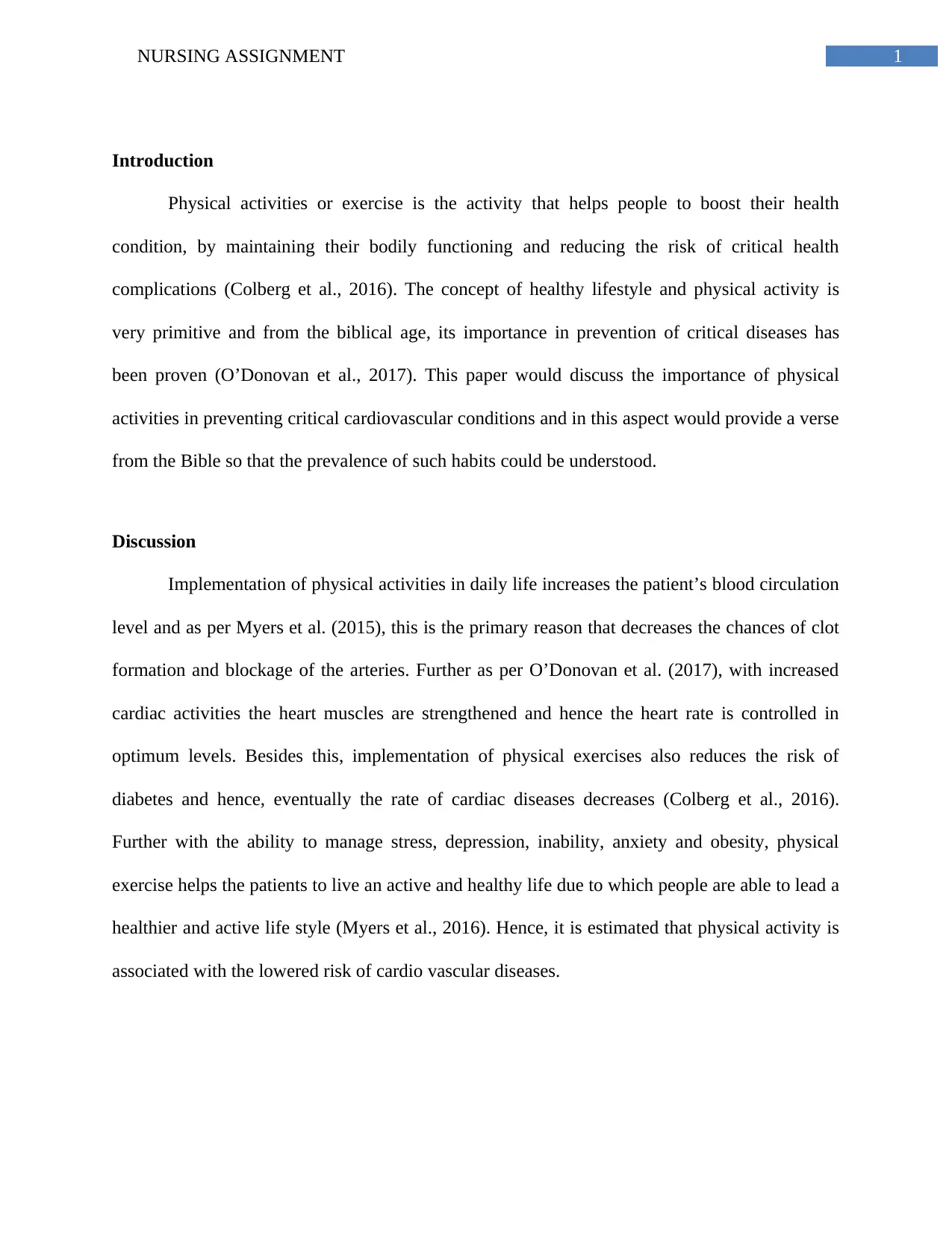Cardiovascular Health: The Role of Physical Activity and Exercise
VerifiedAdded on 2022/09/17
|4
|551
|34
Report
AI Summary
This report explores the crucial connection between physical activity and cardiovascular health, emphasizing its role in preventing heart disease. The assignment delves into the benefits of exercise, referencing relevant literature such as Colberg et al. (2016), Myers et al. (2015), and O’Donovan et al. (2017) to support its claims. It discusses how physical activity enhances blood circulation, strengthens heart muscles, and reduces the risk of diabetes, ultimately contributing to a healthier lifestyle. The report also includes a relevant Bible verse (First Corinthians 6:19-20) to highlight the importance of caring for one's body. This assignment provides insights into the importance of physical activity in the context of nursing and healthcare, emphasizing its impact on overall health and well-being.
1 out of 4











![[object Object]](/_next/static/media/star-bottom.7253800d.svg)